Menu
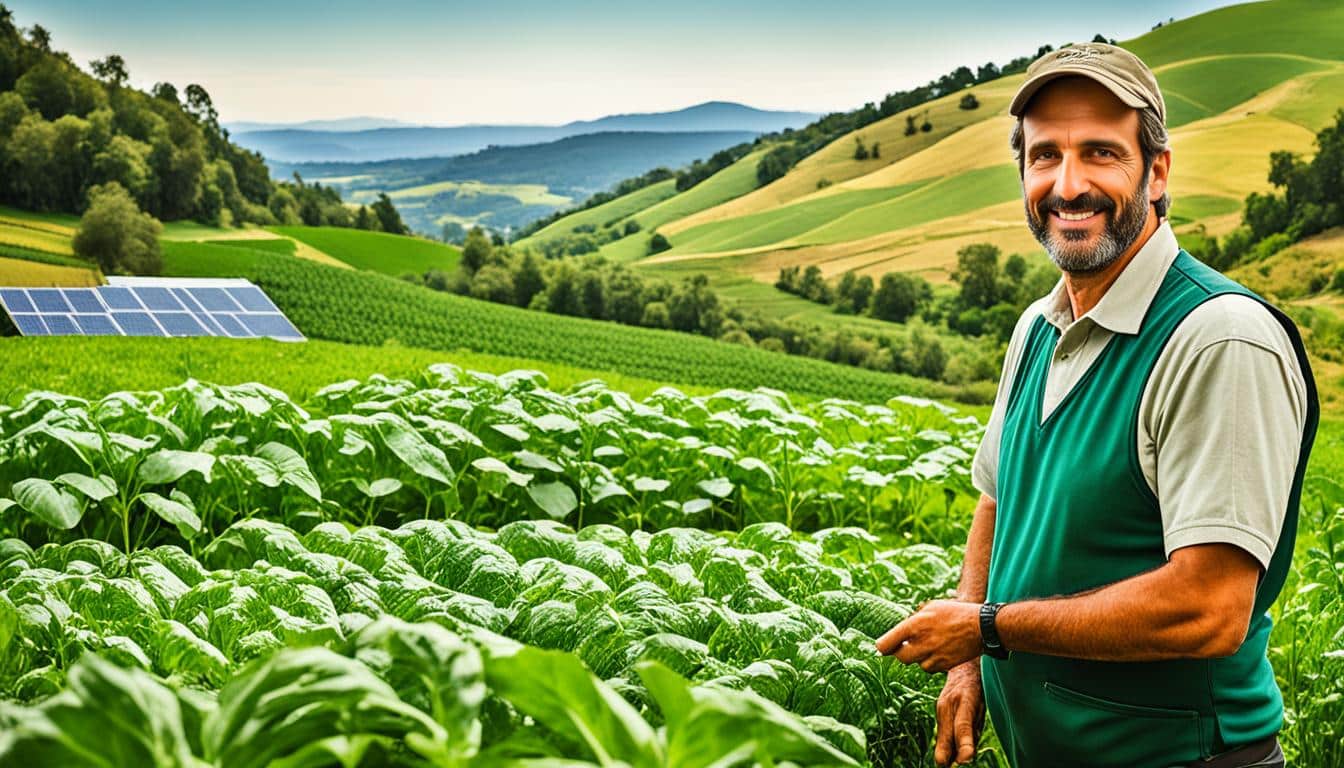
Standing in a field of rich crops, one feels tied to the Earth. It is an intricate web of life that nourishes us. This connection spurs our efforts towards sustainable farming and taking care of our environment. Recently, I took part in a biodiversity workshop for farmers. It aims to teach sustainable farming and protect our precious ecosystems.
These workshops started in 2020 through a joint effort spearheaded by Lidl. They include experts from across the supply chain, NGOs, schools, and farmers from different parts of Europe. The goal is to create plans for biodiversity, manage soil and nutrients, handle pests, and more.
It’s great to see companies caring about biodiversity by looking at farm practices. Every year, independent bodies check how well farms are doing with these practices. They use GLOBALG.A.P. numbers to make sure everything is done right.
These workshops do more than just set rules. They change the way we farm. They help protect nature and make farming better. It’s amazing to see how farmers, with others, can make a big difference. It’s not just talk; it’s real work that is changing our farming future.
Biodiversity workshops are a big step ahead in teaching farmers about eco-friendly methods. These aim to blend farming with nature, tackling today’s farming problems. They help in learning and applying farming that’s good for the earth.
Started by a group, including Lidl, these workshops highlight earth-friendly farming in the EEA. They guide fruit and veg farmers to use methods that boost both farming and the environment.
The workshops are well-organised, covering various topics. For example, Module 3 talks about why and how to include biodiversity in farming plans. It shows how vital this step is for improving farming and the economy.
The best part is that these workshops are very practical. They give farmers tools and knowledge to farm in eco-friendly ways. This includes not just farming but also spreading biodiversity methods in different farmlands.
Farmers keep learning how to farm better, with checks every year. Independent groups check if they’re following the rules, leading to good farming certificates. These checks push for always better farming practices.
The workshops also cover specific rules for different farm markets. If fruit and veg farmers are sending produce to the US, they must follow certain guidelines. This ensures safety and care for the environment in farming.
What’s more, these sessions are not just talk; they are about action too. The first Smart certificate by IFA went to Roberto Faillace in Italy. This shows how learning in these workshops leads to better farming all around.
Finally, the workshops believe in team effort and sharing knowledge. They are part of a global effort, backed by groups like the GEF, to improve farming worldwide. They work together to make farming both good for us and the earth.
To sum up, biodiversity workshops play a key part in teaching eco-farming. They are all about teaching farmers to farm in ways that help nature. This ensures farming helps the land and stays productive for the future.
Sustainable farming is key to looking after our planet and keeping agriculture strong. It means using new methods that care for the Earth while meeting farming needs. With 40% of the world working in agriculture, how we farm affects everyone.

Today, farming can harm the environment through soil damage, emitting too many greenhouse gases, and using too much water. Did you know, livestock accounts for 18% of all the world’s greenhouse gases? Sustainable farming aims to lower these harms with smarter methods.
Better soil health is a major plus of sustainable farming. Techniques like changing what crops are planted, growing covers, and not tilling so much help soil stay rich. This keeps farms productive for longer. Plus, using less water is vital since agriculture uses 69% of the world’s fresh water.
In places like California, saving water is super important. It takes about 15 gallons of water to grow just 16 almonds. So, every drop matters.
Sustainable farming means more plant and animal variety. This is good for the land and helps fight off diseases and pests. In the US, many crops are genetically engineered, which can reduce diversity. But, sustainable ways encourage a mix of plants, saving many species. This helps our farms and if we look after nature, it will look after us.
| Aspect | Conventional Farming | Sustainable Farming |
|---|---|---|
| Soil Health | Degrading | Improving |
| Greenhouse Gas Emissions | High | Low |
| Water Use | Excessive | Efficient |
| Biodiversity | Low | High |
Using sustainable farming helps us take care of nature and work with it, not against it. It’s our duty and a wise choice for the future of farming.
Agroecology training covers green farming methods. It aims to keep farm life diverse and stable. Since the 1920s, it has promoted harmony in farming ecosystems.
The basis of agroecology lies in 10 principles recognised by FAO. These principles stress diversity, sustainable usage, and system resilience. They make space for effective knowledge sharing and strong social values too.
These principles guide farmers to work with nature more. They use methods like growing different crops together. This helps both the plants and the land. Other approaches include cycling through different crops over time, and mixing farming with keeping animals.
Farmers learn how to put these ideas into action. They do things like growing different crops next to each other. This keeps the soil healthy and uses less water.
Agroecology also encourages farmers to work together and learn from each other. This sharing leads to new, earth-friendly ways of farming. It’s important for our world where just a few crops feed most of us.
The 13 agroecology principles focus on using what we have wisely. They talk about saving the land and keeping animals healthy. They are a roadmap for making farming both productive and sustainable.
In today’s changing farm scene, environmental awareness programmes are key. They teach farmers about the vital role of biodiversity conservation. These efforts use fun and hands-on activities to draw farmers in.
Raising awareness on biodiversity conservation is vital. Farmers learn how biodiversity boosts farming and fights climate change. The EQIP scheme gives farmers money to improve biodiversity. This includes protecting soil, making homes for wildlife, and saving water.
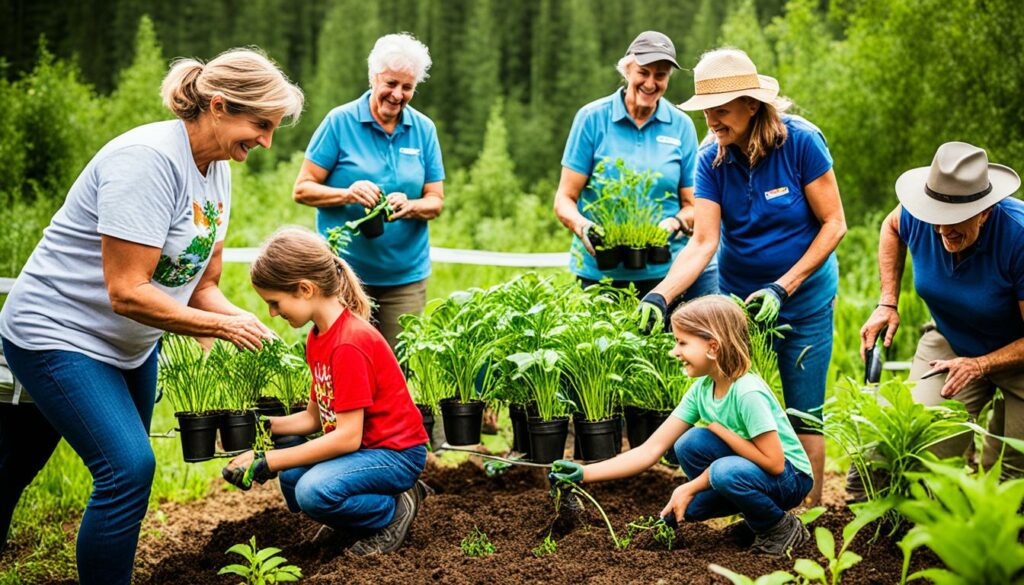
Interactive sessions and field trips are big parts of learning about the environment. Farmers see with their own eyes the benefits of saving nature. They might learn how to make soil healthier or see a farm that’s doing a great job of looking after wildlife. EQIP helps by funding energy projects and improving farms with high tunnels.
These interactive events inspire farmers to use more conservation practices. This helps keep water and air clean, soil healthy, and wildlife happy. It makes their farms better and the environment stronger.
Habitat restoration workshops help fix ecosystem problems on farms. They teach farmers useful conservation techniques. An important project, Transitioning to Reduced Tillage in Vegetable Production, teaches about improving soil with compost. This helps with farming without digging up the soil too much.
Feeling Testy is a workshop about understanding soil for better crops. It’s important for making the right choices for the land. Jessica Chiartas and Nic Podol run this workshop, helping farmers know about their soil’s health.
Farm Scouting, led by Jessica Vaughan and Doug O’Brien, teaches fast, accurate field checks. These checks help apply conservation techniques that fit real needs.
Adding animals to farming can also help the environment a lot. The Integrating Livestock in the Regenerative Organic Vineyard workshop shows how. It talks about how animals can make the soil and vines better. This was taught by Anna deLaski, Joseph Brinkley, and Oliver Mikkelsen.
There’s a trend for community projects in habitat recovery, like coastal areas. Nearly $25 million was given for this work by NOAA. For example, the Tribal-Scientific Alliance to Restore Red Abalone got $1.6 million.
Many projects have been funded, such as:
These projects show how important habitat restoration workshops are. They bring people together for the land’s health and to grow food better.
| Project | Funding Amount | Location |
|---|---|---|
| Red Cap Creek Floodplain Restoration | $519,000 | California |
| Baldwin Hills Parklands Community Connection | $928,000 | Los Angeles |
| Salmon River Tributary Salmonid Habitat Enhancement | $457,000 | California |
| Chankawan Side Channel Restoration | $695,000 | Oregon |
To wrap up, habitat restoration workshops are key for better farming and environmental care. They show new conservation techniques that help the land. Farmers who take part not only improve their fields but also help protect nature.
Soil health is key to successful farming and sustainable land use. In our workshops, we will look at why healthy soil is vital. We’ll also check out different ways to boost soil life.
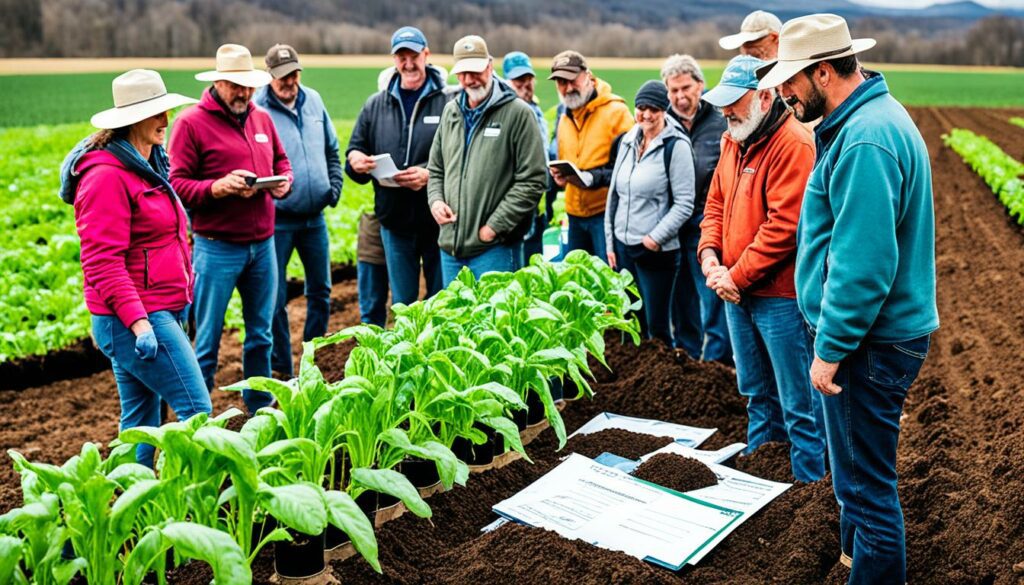
Good soil creates a healthy home for many living things. It boosts the growth of crops, keeps water clean, and supports a variety of life. We’ll learn how different organisms in the soil work together to keep it healthy.
These workshops will show how enhancing the soil’s life also helps the whole ecosystem. They’re a step towards better land care for us and future generations.
To better our soil, we’ll learn about various farming methods. These include:
Hawaii Women Farmer Network (WFN) members will share how they use these techniques.
You’ll get to hear stories from famous farms. Places like SBH Taro Farms, Sweetland Farm, and Maiden Hawaii Naturals will talk about their ways.
Also, we’ll get hands-on with these methods. This includes testing soil and water. The workshops offer both online and in-person chances to learn, starting on June 1, 2021. They offer a full lesson in caring for our land well.
Thanks to support from the Atherton Foundation and the NRCD Council, these workshops are a great chance. Especially, for those interested in farming, and women in agriculture, to learn about keeping the soil healthy.
| Workshop Details | Information |
|---|---|
| Series Focus | Regenerative Agriculture Principles and Practices |
| Lead Facilitators | Female Farmers from Hawaiian Islands |
| Target Audience | Local Producers, Agriculture Enthusiasts, Wahine in Agriculture |
| Start Date | June 1, 2021 |
| Format | Virtual and On-Farm |
| Funding | Atherton Foundation, National Resource Conservation and Development Council |
Nature conservation workshops are key in helping farmers understand how to protect wildlife habitats. They cover many topics to deal with the complex issues surrounding ecosystem protection. This includes saving native plant and animal species and controlling invasive ones. The goal is to help farmers increase and protect the variety of life on their lands.
The Nature Conservancy works in over 70 places globally. It aims to make a big difference in climate and biodiversity by 2030. The group works to protect land and water. For example, in South Australia, the Nilpena Ediacara National Park keeps a precious fossil history safe.
In other parts of the world, unique conservation projects are happening. In the Solomon Islands, women are helping leatherback turtles survive. And a new crab found in Hong Kong shows why their work is important. In Papua New Guinea, women are working to protect mangroves. All these efforts show the variety of work aiming to protect our nature.
In places like Pate Island, Kenya, The Nature Conservancy teaches farmers special ways to look after their land. It trains them in managing areas that help wildlife move and survive. These are called conservation corridors.
The lessons from nature conservation workshops don’t stop at helping animals. They also teach farmers to manage their land in ways that keep it healthy. One big effort is the Regenerative Fund for Nature. It helps farmers switch to farming that helps the land and the climate. This project covers 840,000 hectares, offering benefits to nature and farmers.
Here are a few examples of conservation projects around the world:
| Project | Region | Focus |
|---|---|---|
| Organic Cotton Accelerator | India | Transition to organic agriculture |
| Fundacion Solidaridad Latinoamerica | Argentina | Sustainable grazing land management |
| Epiterre | France | Resilient agro-ecological model |
| Conservation South Africa | South Africa | Integrating small stock farmers into grazing associations |
Our work in nature conservation, helping manage ecosystems, and protecting wildlife is crucial. With projects worldwide, we aim for a balanced planet. These workshops are steps towards living in peace with nature.
Biodiversity workshops help farmers learn about the environment and how to farm sustainably. They cover both theories and hands-on skills needed for today’s farming.
In these workshops, you’ll learn how to manage biodiversity on your farm. You’ll get to know about good farming practices that help the environment. The topics include taking care of the soil, restoring habitats, and protecting wildlife.
These workshops are great for farmers, advisors, and certifiers. They focus on biodiversity in the food industry. Certified farmers get help to meet biodiversity requirements. Also, food managers learn how to make products that are good for the environment and society.
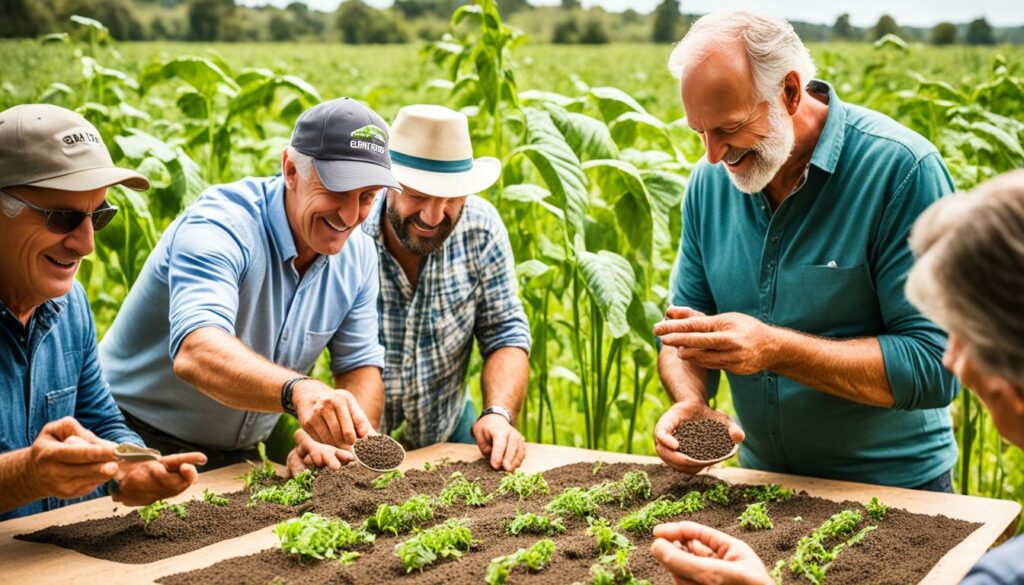
By joining these workshops, you’ll learn a lot about the environment. This knowledge helps you make your farm healthier and more efficient. Your crops might grow better, and your farm’s impact on the environment could get smaller.
Advisors will get better at helping farmers with the environment. Certifiers will also improve. They’ll be better at checking if farms are doing the right things for biodiversity. These efforts will make our ecosystems stronger against harm.
| Aspect | Count | Countries Involved |
|---|---|---|
| Campaigns for Conservation (C4C) | 38 | Benin, Bolivia, Ecuador, Ethiopia, Kenya, Mexico, Nepal, Peru, Vietnam |
| Target Audience Reached | 43,000 | Among twelve different countries |
| Wider Community Impacted | 570,000+ | – |
| Project Fundings | 2,309,560.00 € | – |
The goal of these workshops is to show how important biodiversity is in farming. They aim to change farming practices for better biodiversity. There are 338 ways found to make biodiversity a core part of farming around the world.
Conserving biodiversity in the countryside needs many steps. This includes getting the local community involved and making plans for sustainable growth. These actions protect nature and help farming and people’s lives for the long term.
It’s vital for the community to play a part in saving rural nature. This way, we can use their wisdom and methods that look after the land. An example is when farmers in Central America worked together on cacao farms to save a lot of nature.
For the countryside to keep its rich variety of life, we need to plan for the long run. This might involve making deals to stop cutting down forests and checking on the local wildlife. It also means supporting farming that doesn’t harm nature.
One good example is the agreement in Honduras not to cut down forests since 2019. Another is in Guatemala, where we keep an eye on nature in big areas, which is important for the area’s growth and protecting key parts of the environment.
| Location | Initiative | Impact |
|---|---|---|
| Honduras | Zero Deforestation Agreement | Protection of vulnerable ecosystems |
| Guatemala | Biodiversity monitoring systems | Coverage of 40,000 ha palm oil plantations |
| Mexico & Caribbean | Good agricultural practices | Improved biodiversity outcomes |
These ways show how working with the local people and having good plans can keep the countryside’s life full and healthy. By using their knowledge and working together, we make sure animals and plants have safe places to live.
To help farmers learn more about farmer education initiatives, we use many different approaches. The goal is to give them the knowledge and skills they need. This helps them take better care of the land and use resources wisely.
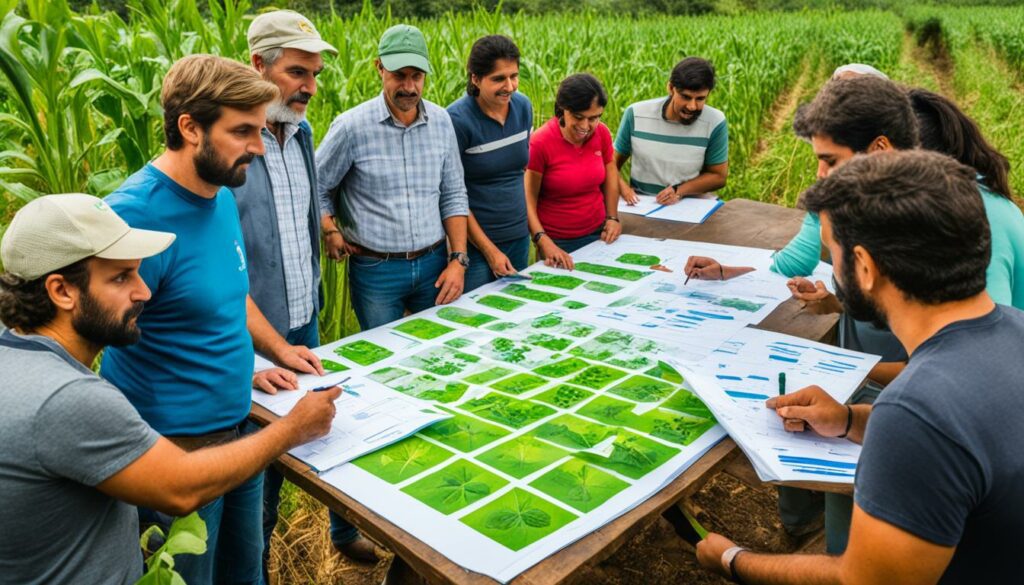
We use participatory educational methods to get farmers directly involved. This includes practical activities like working together in fields. They also attend workshops and see ‘hands-on’ demonstrations.
Another important part is setting up community seed banks and on-farm conservation practices. These let farmers share and save seeds together. It keeps a variety of crops alive. They are supported by groups such as the Rural Advancement Foundation International (RAFI) and the Seed Savers Exchange. This saves old crops and helps farmers against pests and diseases.
The success of these programmes is checked by looking at things like soil health and crop numbers. This helps us understand what is working and where we can improve. These checks are done regularly.
For example, a big project reached out to many farmers in countries like Benin, Bolivia, and Nepal. It was funded with a lot of money and lasted from 09/2016 to 06/2021. It shows how big projects can make a difference. They tell us what works well and what to change in the future.
Summing up, using participatory educational methods and checking the results make a real difference in farming. By always learning and improving, these efforts help protect the environment. They also help farmers have stronger, more secure farms.
In the heart of Saratoga Springs, Pitney Meadows Community Farm stands out. It shows an innovative way of farming, making the locals powerful with farming lessons. This farm shines as a leader in green ways and teaching about farming.
In 2020, the need for emergency food help rose in New York’s Capital District because of COVID-19. This meant 60 million Americans needed food help, 40% for the first time. Pitney Meadows Community Farm met this challenge by boosting its
“We aim to feed the community and teach about farming in a sustainable way,” says Julia N. Stokes, Executive Director of Pitney Meadows Community Farm.
The farm focuses on educating through farming, helping those hit financially by the pandemic. They do this with hands-on training and workshops, teaching how to farm in a way that keeps nature healthy.
Their educational work covers
. These have helped increase farming knowledge in the area and made the community stronger.
After the COVID-19 vaccine started, fewer meals were needed at food pantries. Yet, Pitney Meadows Community Farm still plays a big role in keeping food steady and teaching. This helps keep things working well for the long term and keeps the community engaged.
In the past few years, the link between government and NGO help for sustainable farming has become very important. This teamwork supports farmers and makes agriculture better for the earth. Let’s look at how they are helping farmers.
Both the government and NGOs provide a lot of help, especially for farmers trying to farm in eco-friendly ways. For example, Regeneration International teams up with Via Organica and the Main Street Project to train farmers in regenerative poultry practices. The work of the Soil Foodweb Institute, founded by Dr. Elaine Ingham, is also key. They offer soil tests and advice to boost soil health around the world.
Government efforts are not far behind, with special focus on supporting women and girls in farming. They invest in tools and technologies tailor-made for farmers in Africa and South Asia. Public programs also help breed new crops that suit the local environment well. This is vital for the future of farming.
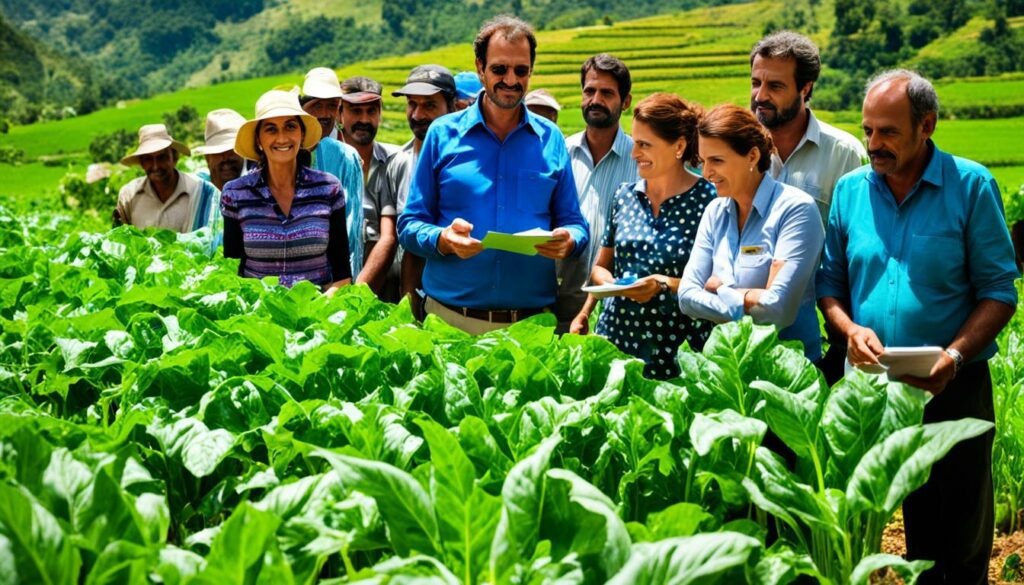
Team efforts in farming have made a big impact. The Food Tank has identified 18 groups at the forefront of sustainable agriculture. Their collective work is inspiring. The Savory Network has 30 hubs globally that teach farmers holistic management, offering important support.
Actions by organisations like Sustainable Harvest International in Central America are making a real difference in eco-friendly farming. They are helping preserve the land. Investments in co-ops and community groups support small-scale farmers in earning stable incomes. These groups help make farming and food systems more varied and provide better food access in Asia and Africa.
| Organisation | Initiative | Key Impact |
|---|---|---|
| Regeneration International | Farmer Training | Regenerative Poultry Project |
| Soil Foodweb Institute | Soil Analysis | Improved Soil Health |
| Food Tank | Highlight Initiatives | 18 Regenerative Agriculture Programs |
| Savory Network | Holistic Management Training | 30 Global Hubs |
| Sustainable Harvest International | Sustainable Farming | Environmental Preservation in Central America |
With the right support and working together, farmers in Africa and South Asia can grow more food. This can better their lives and help their communities. This joined-up approach lays a strong base for farming that is good for the earth and the economy in the long run.
The Memorandum of Understanding (MOU), signed between the EPA and the U.S. Department of Agriculture’s Natural Resources Conservation Service (NRCS), marks a big step forward. It recognises and supports farmers who choose to use voluntary conservation methods. Such an important agreement boosts efforts to work together. It helps farmers adopt stronger conservation methods to fight pesticide problems.
This tie-up offers farmers credits for their conservation efforts. Such rewards encourage farmers to choose sustainable farming practices. By joining in, farmers are key in lessening pesticide harm. This helps protect fragile species and boosts our environment’s well-being.
The EPA and NRCS are teaming up to deal with serious environmental issues, like reducing pesticide effects. They use new methods to help endangered wildlife threatened by pesticides. By working together, they spread the word about conservation practices. This protects endangered species’ homes from pesticide dangers.
There will be more talks and workshops between the EPA and NRCS. The goal is to guide and approve the use of NRCS practices as ways to cut down pesticide risks. This is a big first step in making pesticide use a standard. It will also push for wider use of sustainable farming methods.
As the EPA works through its backlog of pesticide evaluations, it shows a move towards better farming. Projects like the one looking out for 27 species hurt by pesticides show what good the EPA-NRCS team can do. These works highlight the value of their joint efforts.
This MOU makes the path for reducing pesticide harm clearer. It also sets a model for upcoming team efforts to help biodiversity and support lasting farming. Thanks to such efforts, the Endangered Species Act has helped keep 99% of at-risk species from disappearing in the last fifty years. This success will grow with more conservation work.
The 2023 EPA litigation settlement is changing how pesticides are used, especially near endangered species. It involves more than 300 pesticide ingredients. Now, the EPA must look at eight harmful insecticides’ effects on at-risk animals by 2027.
Also, they are studying the risks of four rodenticides like brodifacoum, with decisions due by 2024. This work is to make things safer for wildlife and farming.
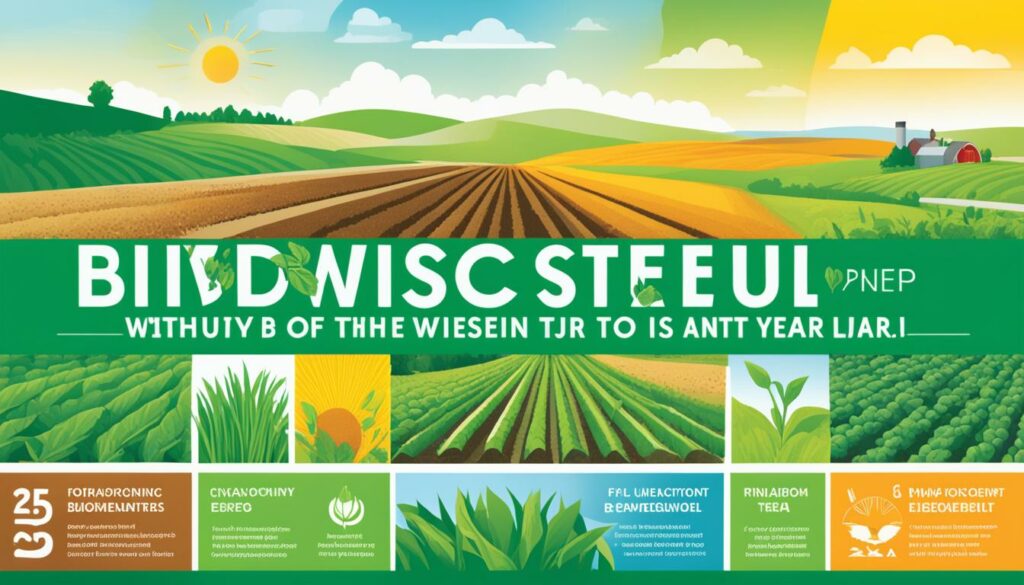
The EPA litigation settlement 2023 has brought new steps to protect wildlife from pesticides. The EPA’s first workplan focuses on safeguarding endangered animals. It will release a plan for herbicides by 2024 and one for insecticides by 2025.
They’re also looking at how new pesticides might harm at-risk species before approving these pesticides. The steps to take will become simpler – from nine to four levels.
The new plan also aims to lessen the needed protection in some areas. They will do this if there’s little risk of the pesticides running off or if farmers use methods to stop runoff.
Discussion with partners was crucial in shaping the settlement’s results. CropLife America held a workshop to help companies follow the rules better. It seems that parties want more flexibility. This means letting farmers select the best ways to protect wildlife.
The EPA’s ideas tackle problems like spraying drifting away or flowing into water. They stress early actions to tackle these risks. This help and education for farmers help strike a balance between farming and protecting nature.
The steps taken after the settlement show a combined effort to handle farming and environmental worries together.
Biodiversity workshops play a key part in highlighting the importance of our environment. They help spread the word on farming in ways that protect nature and use land wisely. Due to so much land being used for farming, these workshops are more crucial than ever.
The world is losing its natural spaces, like California’s vast wetlands. This loss shows why we need to teach farmers how to farm without harming the environment. Actively working to reduce agrochemicals can help stop places like the Gulf of Mexico from turning into dead zones.
We must keep improving and spreading awareness through biodiversity workshops. This is because the world’s people and their demands for food are growing. If we’re not careful, we could end up harming more of the Earth’s natural areas to grow food.
In a nutshell, biodiversity workshops are crucial for the future of farming. They give farmers the tools to grow food wisely, without damaging our environment. This helps ensure we can feed everyone without sacrificing the health of our planet. For more insights, visit this link.
Biodiversity workshops for farmers aim to teach about the need for biodiversity in farming. They show how sustainable farming works. These workshops bring farmers and conservationists together to improve farm methods and protect nature.
Agroecology training teaches about farming in a natural way, promoting diverse farm systems. It covers how plants and animals help each other, pest control, and keeping the soil fertile. This training is about how to farm where nature thrives.
Sustainable farming keeps the soil healthy, saves water, and boosts biodiversity. It makes ecosystems strong and helps fight climate change. Good farming means more crops and a clean environment.
Programmes aim to make farmers care about nature and its protection. They include fun activities and visits to learn more about the environment.
Habitat workshops teach farmers how to help ecosystems heal. They learn to make safe paths for wildlife, control harmful species, and save the good ones. This helps nature stay strong and able to fight challenges.
Healthy soil makes crops grow well and nature balanced. It is key for a farm to thrive and protect the environment. Practices to make soil better include adding compost and planting cover crops.
Nature workshops help farmers learn to protect wild areas and their natural farms. They cover keeping local plants safe, controlling enemies of these plants, and creating safe zones for them.
Farmers get to learn and do more for the environment from these workshops. They end up farming in ways that are good for nature and their crops. This helps everyone by saving our planet in the long run.
When the community cares, it makes looking after nature better. People’s local knowledge and working together can do wonders for protecting the countryside. This makes sure that these efforts last a long time.
Teaching farmers about nature-friendly farming includes doing things together. They get to work on farms, join workshops, and see how things are done in the fields. The success is shown by checking their farm and that they are helping nature more.
Pitney Meadows Community Farm shows how everyone can learn and grow food together. It has lessons and gets the community to work on the farm. This helps people know more about farming and builds a stronger community.
They help farmers change for the better by giving money, chances to learn, and working together on projects. This support makes farms better and helps the environment.
This Agreement helps farmers protect nature and use less harmful chemicals. It encourages attending biodiversity workshops and farming in ways that are good for the earth.
In 2023, new ways to keep nature safe from harmful chemicals were put in place. They showed that teaching farmers early helps protect nature well and got feedback from many people about its effect on farming and nature.